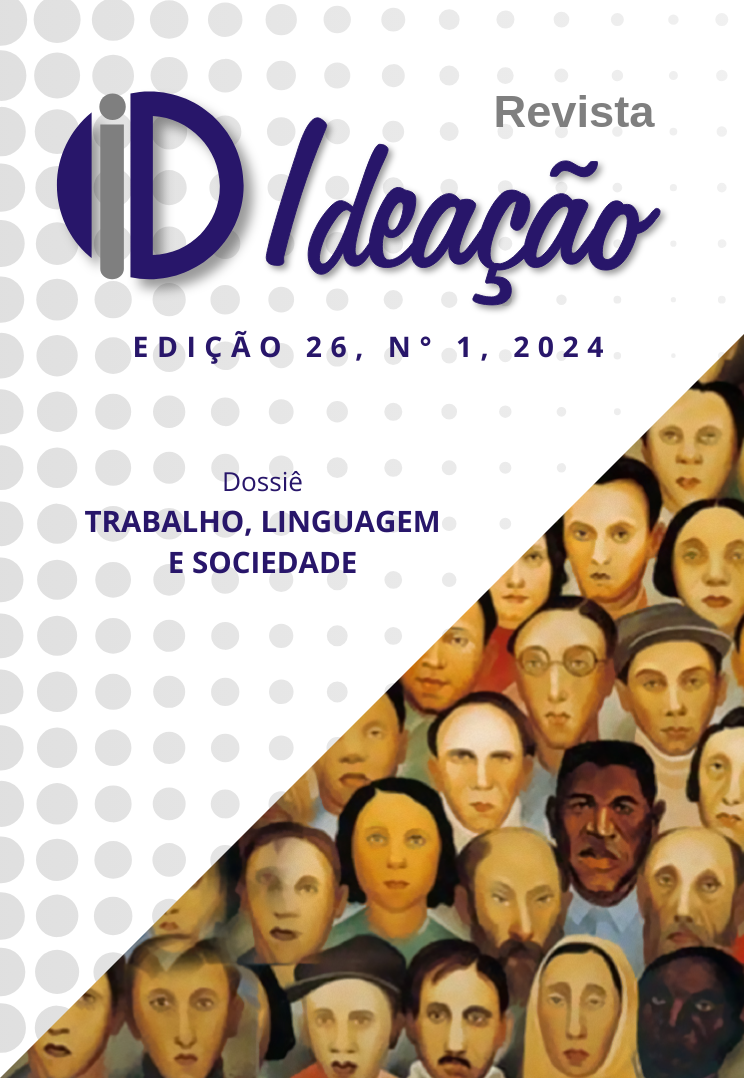Heritage, culture and history at Mariana-MG railway stations
na onomastic research
DOI:
https://doi.org/10.48075/ri.v26i1.31802Keywords:
Toponymy, 20th Century, Lexical Study, railway, railway stationsAbstract
The present paper makes a cut of the toponymy present in the railway stations in Mariana/MG, in order to endorse the importance of the culture and history of the people who lived and transited in these places, since the first half of the 20th century. It is based on this explanation that the choice of nine place names belonging to the stations group of Ramal Ponte Nova. These toponyms were formed over decades and have been obliterated since the 1980s, with the interruption of rail services over 40 years ago. Toponymy in Brazil, currently, is a scientific discipline of investigation of the origin of place names and the social history related to them. This study aims to recover the historical origin of the toponyms: Castro, Dom Silvério, Edgard Werneck, Floresta, Goiabeiras, Lavras Velhas, Mariana, Passagem de Mariana and Ribeirão do Carmo. Toponymy records the circumstances of people's experiences, experiences that represent history and culture. According to Isquerdo (2012) the proper names of places are resemantized with the primary purpose of naming a place. The naming of places has always been, in addition to its nominative function, significant for societies around the world. Toponymy codifies history, place and cultural heritage, therefore, each community has a sui-generis way of extralinguistic reality, according to Villalva (2014) including or excluding orality, more or less prestigious discursive records, or different temporal delimitations. According to the taxonomic model proposed by Dick (1990), an analysis and classification of toponyms will be carried out.
Downloads
Published
How to Cite
Issue
Section
License
Copyright (c) 2023 Direitos partilhados conforme licença CC BY-NC-SA 4.0

This work is licensed under a Creative Commons Attribution-NonCommercial-ShareAlike 4.0 International License.
Authors who publish in this journal agree with the following terms:
1. Authors maintain copyright and grant the journal the right of first publication, with the work simultaneously licensed under the Creative Commons Attribution License that allows the sharing of the work with recognition of authorship and initial publication in this journal.
2. Authors are authorized to assume additional contracts separately, for non-exclusive distribution of the version of the work published in this journal (e.g., to publish in an institutional repository or as a book chapter), with acknowledgment of authorship and initial publication in this journal.
3. Authors are allowed and encouraged to publish and distribute their work online (e.g., in institutional repositories or as a personal page) at any point before or during the editorial process, as this may generate productive changes, as well as increase the impact and citation of the published work (See The Effect of Free Access).
Creative Commons License
This work is licensed under a Creative Commons Attribution-Noncommercial-ShareAlike 4.0 International License, which permits sharing, copying, distributing, displaying, reproducing, the whole or parts provided it has no commercial purpose and the authors and source are cited.


